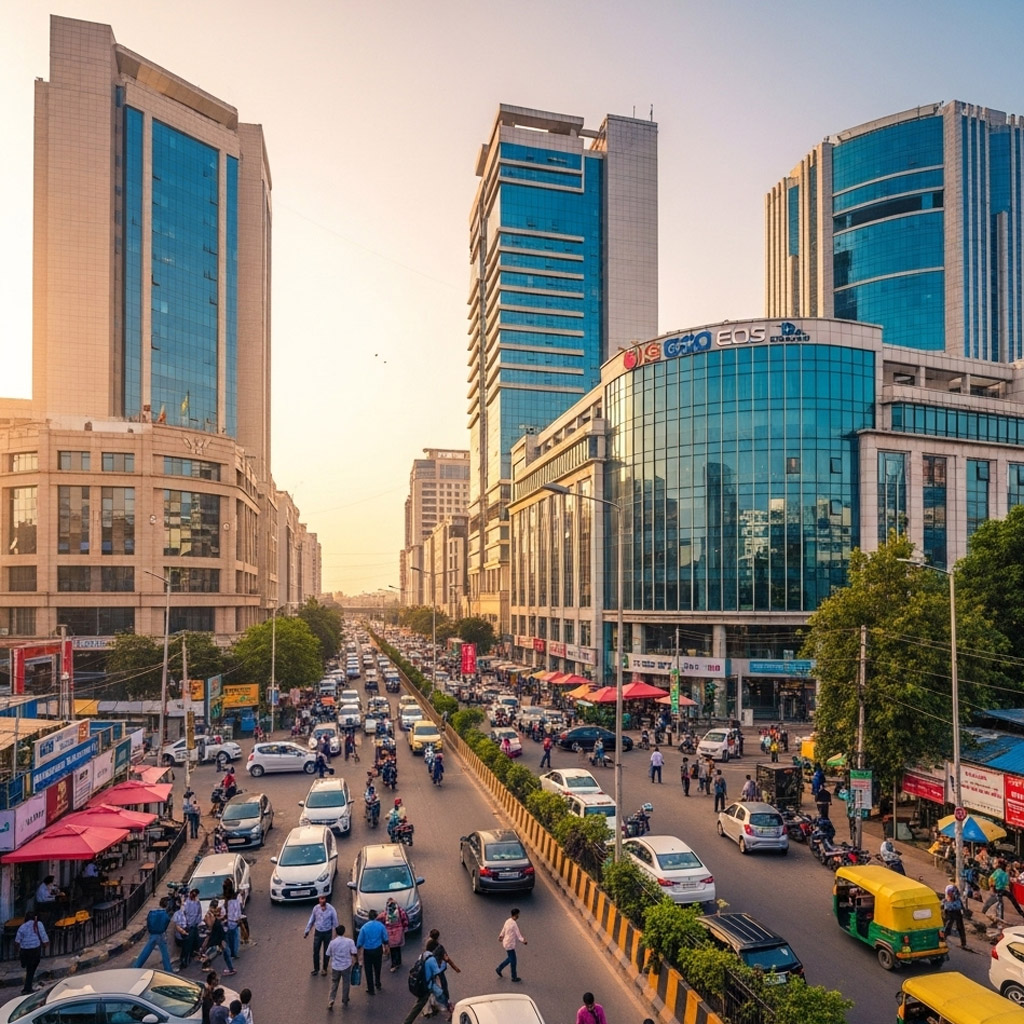Indian Commercial Property Market Roars: Q2 2025 Sees Double the Activity, Residential Slows
New Delhi, India – India’s real estate landscape witnessed a significant shift in the second quarter of 2025, with commercial property transactions surging dramatically, commanding the lion’s share of deal activity.
According to data analyzed by consultancy firm Grant Thornton, commercial assets accounted for a dominant 62% of the total ₹6,500 crore transaction value in Q2, a sharp increase from 30% in Q1. This surge presents compelling insights and opportunities for real estate professionals, architects, and interior designers, signaling a robust demand for office spaces, retail hubs, and other commercial developments across the country.
The Commercial Comeback
The data clearly indicates a strong resurgence in the commercial real estate sector. This trend can be attributed to several factors, including:
Growing Corporate Demand: Many businesses are expanding their operations, leading to increased demand for Grade A office spaces. The return-to-office trend, albeit hybrid for many, is solidifying the need for well-designed, functional, and technologically equipped commercial environments.
Infrastructure Development: Ongoing and planned infrastructure projects across major Indian cities are enhancing connectivity and accessibility, making commercial hubs more attractive for businesses. Improved transport networks support the establishment of new corporate campuses and business districts.
Investor Confidence: The stability and potential for higher returns in the commercial segment are attracting significant institutional and private investment. This renewed confidence is fueling new project launches and faster absorption rates.
Retail Sector Revival: With economic activity picking up, the retail sector is also showing signs of strong recovery, leading to increased leasing and development of modern retail spaces, including malls and high-street outlets.
Residential Market’s Shifting Tides
In contrast to the booming commercial segment, the residential real estate market experienced a slump in Q2 2025. While specific reasons for this slowdown aren’t detailed in the immediate report, several factors could be at play:
Affordability Concerns: Rising property prices and interest rates may be impacting the purchasing power of potential homebuyers, particularly in the mid and affordable segments.
Investor Preference Shift: Some investors might be diverting funds from residential properties to commercial assets, where returns appear more immediate and robust.
Project Delays: Some under-construction residential projects might be facing delays, impacting new sales and overall market sentiment.
Opportunities for Industry Professionals
For architects, interior designers, and real estate consultants, this shift presents a clear directional cue.
Architects: There’s a heightened need for innovative and sustainable commercial building designs that cater to modern corporate requirements, including flexible workspaces, collaborative zones, and energy-efficient solutions.
Interior Designers: The demand for dynamic and aesthetically pleasing commercial interiors is on the rise. This includes office fit-outs, retail store designs, and hospitality spaces that enhance productivity and customer experience.
Real Estate Professionals: Focus should be on identifying prime commercial land parcels, understanding evolving tenant demands, and developing strategies for marketing and leasing commercial properties. Opportunities in industrial and warehousing sectors, which are often grouped under commercial real estate, are also expanding rapidly.
The robust performance of commercial real estate signifies a healthy business environment and a positive outlook for India’s urban economic growth. Professionals in the built environment must adapt their strategies to capitalize on this burgeoning sector while closely monitoring the dynamics of the residential market.
Read more Architecture, Interior Design, Real Estate industry news at Middle Height. Follow us on Facebook, Instagram, LinkedIn, and Twitter


